Want to get back to the overview of the 1200 – 1450 CE section?
1200 – 1450 CE OVERVIEW
AP WORLD HISTORY HOMEPAGE
There were many consequences to the increase in trade between 1200 and 1450. Read the Google Slides below to learn about how the world changed because of trade along the Silk Roads, the Trans-Saharan trade routes, and the Indian Ocean trade.
As civilizations from Asia, Africa, Europe, and the Middle East interacted through trade routes, they shared their technology.
China: gunpowder and paper
India: Champa Rice (to China and Vietnam), math
Other technologies evolved from multiple cultures.
Islamic scholars translated ancient Greek and Roman texts into Arabic for modern use.
Seafaring technology improved.
Many advancements were made in medicine.
The Swahili language developed in Africa from a mixing of Arabic and Bantu languages.
Spread of Religion
Buddhism spread from India to East Asia (modern China, Korea, and Vietnam). Lower castes that were marginalized by Confucianism were eager converts. Meanwhile, both Buddhism and Hinduism spread to Southeast Asia. Their influences can be seen in architecture and temples like Angkor Wat.
Islam spread farther and faster than any other religion because of the influence of Muslim traders. Islam became the dominant faith in the new African empires that emerged due to the gold trade. When Islam arrived in South Asia, its egalitarian beliefs converted those disillusioned by Hinduism and Buddhism. The Bhakti movement, in which Hindus developed a close, personal relationship with one of their deities, made converting to Islam easier because of its focus on a relationship with God. The evidence of Islam’s influence over a huge part of the world can be seen in the architecture they left behind.
Spread of Crops
India: Champa Rice (to China and Vietnam), Cotton (to Mediterranean)
Southeast Asia: Bananas (to Africa), Sugar (to Mediterranean)
India and Asia: Citrus Fruits (to Mediterranean)
Growth of Cities
Between 1200 and 1450, cities in Africa, Asia, and the Middle East experienced significant growth and development for several key reasons. One of the primary factors was the presence of political stability in many regions, which encouraged urbanization and allowed for the flourishing of trade and commerce. Unlike other periods in history, this era saw relatively fewer major invasions, contributing to a safer environment that attracted both merchants and residents to urban centers. Additionally, the establishment of safe and reliable transportation networks, such as the Silk Road and the trans-Saharan trade routes, facilitated the movement of goods, further enhancing the appeal of cities.
The increase in trade, partly driven by the spread of Islam in Africa and the Indian Ocean basin, played a pivotal role in urban expansion. Islamic culture encouraged trade and the development of bustling marketplaces. Cities became vital hubs where goods from various regions converged, creating economic opportunities for residents. Moreover, cities had access to large labor supplies, as rural populations migrated to urban areas in search of work and economic prosperity.
Agricultural production also witnessed significant growth, thanks to technological advancements and an expansion of cultivated lands. This surplus in food production not only supported the urban population but also allowed for the specialization of labor in areas like craftsmanship and trade. Altogether, these factors coalesced to foster the development of thriving and vibrant cities in Africa, Asia, and the Middle East during this period.
Negative Effects
Between 1200 and 1450, the increased connectivity between different cultures, facilitated by expanded trade networks and urbanization, brought about a double-edged sword. While it promoted cultural exchange and economic growth, it also led to significant environmental degradation and the spread of diseases.
The growth of trade routes such as the Silk Road, trans-Saharan trade, and maritime routes in the Indian Ocean basin intensified the demand for various goods, including precious metals, spices, and textiles. This often resulted in overexploitation of natural resources, deforestation, soil erosion, and the depletion of wildlife in some areas. As urban populations swelled and industries expanded, air and water pollution became common, leading to deteriorating environmental conditions.
Additionally, increased connectivity facilitated the transmission of diseases across vast regions. With greater interaction and migration, diseases like the bubonic plague, smallpox, and malaria could spread more rapidly.
The Black Plague
The Black Plague was a devastating pandemic that swept across Europe in the 14th century, between 1347 and 1351. The causes of the Black Plague were primarily linked to the bacterium Yersinia pestis, which was transmitted to humans through fleas that infested rats. It is believed that the Mongol Empire’s extensive trade routes brought infected rodents to Europe, starting the outbreak.
The outcomes of the Black Plague were nothing short of catastrophic. It is estimated that the pandemic wiped out about 25 million people, with mortality rates ranging from 30% to 60%. Entire communities were decimated, and the loss of life had profound socio-economic consequences. Labor shortages led to increased wages for surviving workers, triggering changes in labor relations and the decline of the feudal system.
Furthermore, the devastation of the Black Plague also sparked fear, superstition, and persecution, with Jewish communities often being scapegoated. The pandemic left a deep scar in the collective memory of Europe, influencing art, literature, and religious practices. It also set the stage for profound changes in European society, paving the way for the Renaissance and the eventual emergence of modernity.
Want to get back to the overview of the 1200 – 1450 CE section?

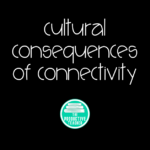
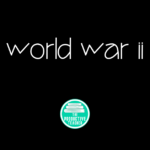
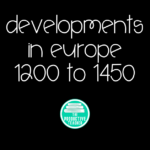
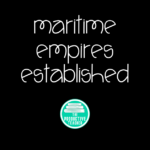
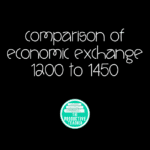

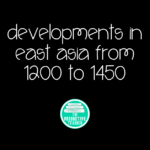
Leave a Reply